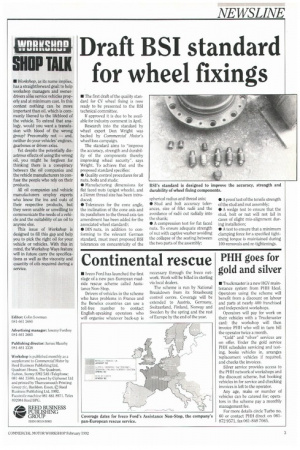Draft BSI standard for wheel fixings
Page 79

If you've noticed an error in this article please click here to report it so we can fix it.
• The first draft of the quality standard for CV wheel fixing is now ready to be presented to the BSI technical committee.
If approved it_ is due to be available for industry comment in April.
Research into the standard by wheel expert Don Wright was backed by Commercial Motor's wheel loss campaign.
The standard aims to "improve the accuracy, strength and durability of the components thereby improving wheel security", says Wright. To achieve that end the proposed standard specifies: • Quality control procedures for all nuts, bolts and studs; • Manufacturing dimensions for flat faced nuts (spigot wheels), and a 24mm thread size has been introduced; • Tolerances for the cone angle, the inclination of the cone axis and its parallelism to the thread axis fan amendment has been added for the associated wheel standard); • DIN nuts, in addition to conforming to the relevant German standard, must meet proposed BSI tolerances on concentricity of the spherical radius and thread axis; • Stud and bolt accuracy tolerances, size of fillet radii and the avoidance of radii cut radially into the shank;
• A compression test for flat faced nuts. To ensure adequate strength of nut with captive washer avoiding the collapse of the seating between the two parts of the assembly;
• A proof test of the tensile strength of the stud and nut assembly; • A wedge test to ensure that the stud, bolt or nut will not fail in cases of slight mis-alignment during installation; • A test to ensure that a minimum clamping force for a specified tightening torque is maintained during 100 removals and re-tig,htenings.




































































































